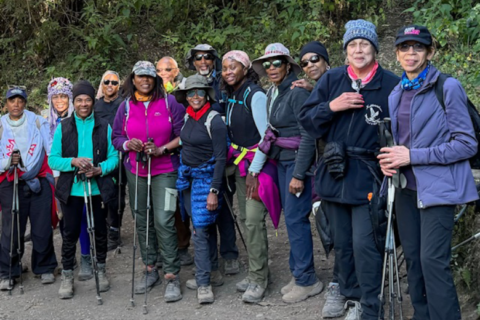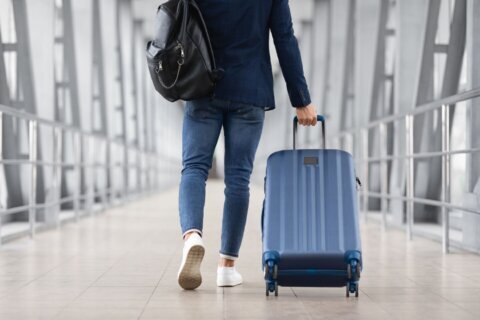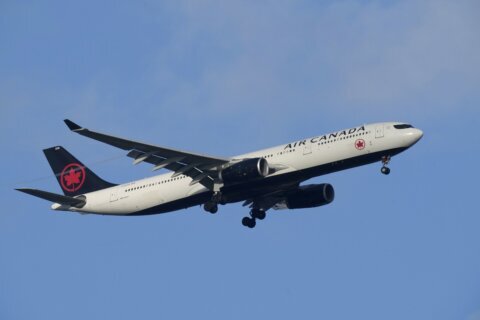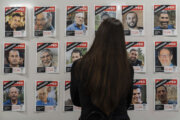Reduce headache and hassle with these expert-approved techniques.
As summer tempts us to skip town for short weekend jaunts to nearby retreats, it’s paramount to learn how to prep our carry-ons for smooth, seamless travel. Aside from traveling lightly, strategic packing enables us to dodge steep baggage fees and other headaches. And with a legion of rules, including suitcase weight and liquid requirements, coupled with long security wait times, there’s no better time to perfect the art of minimalist packing. For this reason, we caught up with expert jet-setters to bring you pro techniques — how to pack, what to bring and how to pare down a suitcase — to lighten your load for a quick, easy weekend escape.
Choose the right carry-on.
When it comes to picking a suitcase, the key is identifying the type of carry-on that best suits your needs. “It depends on the kind of place I’m going,” admits Doug Stallings, senior editor at Fodor’s Travel. While he likes to travel with a compact, hard-sided, four-wheeled Tumi carry-on, which can easily fit in an overhead bin, he cautions that you have more flexibility with a soft duffel bag that can easily be stowed away and compressed. Natalie DiScala, editor of the travel blog Oh! Travelissima, also prefers to travel with a soft-sided Tumi carry-on roller with four wheels or a lightweight Rimowa hard-sided carry-on for short trips.
Meanwhile, John “Johnny Jet” DiScala, editor in chief of the site JohnnyJet.com (and married to Natalie), prefers to travel with duffel bags. “I think the four wheels actually take up too much space,” he says. His trick: carrying a light, leather duffel bag from the company Roots and using a device from TravelSmith called a bag bungee (for $15) to strap his leather bag on top of a roller bag to keep his items in place.
Pare down your wardrobe.
When selecting what to pack for a short trip, the key is including clothes that you can wear more than once, Stallings says. He suggests packing clothes that coordinate together, no matter what your travel plans are, and limiting the number of bulkier clothing items you bring, particularly shoes, which take up a significant amount of space.
Natalie DiScala echoes similar sentiments. She prefers to pack in color schemes to easily mix and match everything, and likes to include versatile pieces that are easy to pack. “Bring sensible choices,” she cautions, noting that while there are three pairs of shoes she wants to bring with her — a pair for running, a pair for walking and a pair of heels for fun — these are often the heaviest items, so it’s best to make sacrifices where you can.
Take out nonessential items.
While it’s tempting to bring shampoo, conditioner, face wash and other body products with you, consider leaving them at home to avoid hassle at security screenings and save space. Natalie DiScala suggests paring down your toiletries to the absolute essentials. “We all like to have the products that we really like,” she says, but it’s key to “really weigh the benefits.” Another trick she swears by is creating a kit filled with toiletries in TSA-approved dimensions (3.4 ounces or 100 millimeters for all liquids). And according to travel blogger Lee Abbamonte, if you’re staying somewhere that doesn’t provide shampoo as a perk for guests, you might want to search for a new travel agent.
Apart from toiletries, assess whether there are accessories that can be stripped from your suitcase to maximize space. While adapters, cords and headphones are necessities, swap heavy headphones for lightweight earbuds, Stallings says.
Fold or roll?
“The roll or fold strategy is one that’s a hot debate,” Natalie DiScala says, noting that she prefers to roll clothes into tight, cylindrical shapes and layer the heaviest pieces (including shoes) at the bottom of her suitcase to conserve space. After layering, she puts the lightest items and her toiletry kit at the top of her bag.
John DiScala, on the other hand, prefers to fold most items to maximize space. Stallings rolls tees, but folds button-downs and keeps them flat to ensure they’re wrinkle-free. He also wears jeans, as opposed to packing them, to consolidate space.
Organize strategically.
Stallings’ key technique for maximizing space and mitigating a lengthy screening at TSA checkpoints is keeping his shoes on one side of his duffel and toiletries on the other end. He suggests placing liquid toiletries in a separate bag from other toiletries. As soon as he arrives, even for a short weekend trip, he takes everything out of his carry-on to stay organized. “I don’t like to live out of a suitcase,” he says. If you’re bringing along dressy leather shoes, he suggests stuffing them with other items, such as socks and underwear to prevent them from getting crushed. For dressier attire, Stallings recommends using dry-cleaner bags. And Natalie DiScala prefers to roll or fold dressier attire with layers of tissue paper and hang them as soon as she arrives at her final destination.
Use the right apps.
Abbamonte turns to trusted digital-planning tools like TripIt Pro not only to organize and manage his trip, but to travel lighter. This way, he doesn’t need to search for itinerary details or shuffle through travel documents since confirmation details, alerts and terminal and gate info are all easily accessible with the app. While TripIt is free, the pro version of the app (which costs about $4 a month) also scans for alternate flights.
Before leaving home, it’s a smart idea to plan with the right packing tools. Packing Pro ($2.99) offers an easy-to-navigate tool for creating a packing checklist. You can easily discover new packing suggestions, monitor and sort your items and filter items based on person or category. The free app TripList ($2.99 for the pro version) also enables you to build tailored lists with items by category (think outdoor gear vs. photography). The pro version allows you to share your lists across different devices, and with friends and family members.
Get your carry-on through security faster by enrolling in TSA PreCheck.
“I tell everybody who will listen: Get TSA PreCheck,” Abbamonte says. You’ll avoid hurdles at security checkpoints and can better organize your suitcase by signing up and paying the $85 fee. PreCheck allows you to keep your shoes, belt and jacket on, as well as your laptop and liquids tucked away in your carry-on. This way, you won’t have to keep your liquids in a zip-close bag at the top of your carry-on or hastily reorganize your bag after going through security. Plus, you don’t have to be concerned about keeping a vigilant eye on valuable electronics, such as your phone and your laptop, since they can be kept in your carry-on rather than placed in separate bins, John DiScala adds.
“If you don’t belong to Global Entry or PreCheck, wear slip-on shoes” for a quicker screening process, Stallings suggests. And if you don’t fly often, he suggests familiarizing yourself with the carry-on baggage requirements imposed by your carrier to avoid paying a hefty checked-baggage fee.
More from U.S. News
How to Travel Like a Flight Attendant
7 Pro Carry-On Packing Hacks for Your Next Weekend Getaway originally appeared on usnews.com







